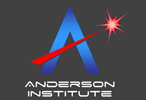Temporal Measurement
An Article by
Dr. David Lewis Anderson
One thing is certain, man has always had a passion for finding better ways to measure it. When it first became important for people to measure time they didn’t have or need wristwatches or clocks. All they needed to know is when the winter is coming or when they could plant or harvest their crops. For this the ancient peoples of the earth used the regular cycles of nature. For instance, it was known to them that the sun rises and sets in a regular and predictable way. It was also known that the moons, stars and planets have consistent and predictable motion through the heavens. And they could keep track of the passing of days with sundials and other similar instruments. With this knowledge they could predict the coming of different seasons. There were many ancient peoples that devised very accurate calendars to keep track of time. The megalithic stones of Stonehenge in Great Britain are an example of such a calendar. And the Mayans of Central America had a calendar based on the sidereal year that was just as accurate as the calendars of today. These early measurements of time were based on the spinning motion of the earth and its rotation around the sun. It is now known today that these motions are not constant but do vary in time. As history progressed methods of measuring times passage became more focused on regular oscillations of such things as springs and pendulums. Today official time is measured by atomic oscillations of cesium to an accuracy of parts per billion. Temporal measurement, or chronometry, takes two distinct period forms: the calendar, a mathematical abstraction for calculating extensive periods of time, and the clock, a concrete mechanism that counts the ongoing passage of time. In day-to-day life, the clock is consulted for periods less than a day, the calendar, for periods longer than a day. Increasingly, personal electronic devices display both calendars and clocks simultaneously. The number (as on a clock dial or calendar) that marks the occurrence of a specified event as to hour or date is obtained by counting from a fiducial epoch—a central reference point. We’ve found many ways to measure time but still when we ask the simple question “what is time?” we cannot answer. This is not a new fascination with the nature of time. As early as the fourth century St. Augustine said it very well with his famous question and answer. “What then is time? If no one asks me I know. If I wish to explain it to one that asketh I know not.” This is indeed a very powerful and sharp insight into the psychology of time and a very, very old and still unanswered question that has been asked for thousands of years. |

